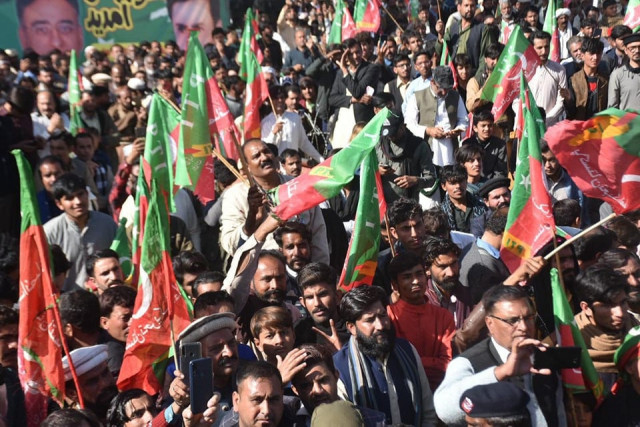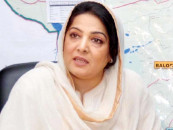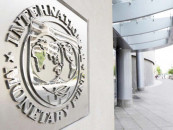What does Haqeeqi Azadi really mean?
Masses are seen vesting hopes and aspirations in pseudo demigods making sweeping promises

For nearly a month now, a long march in Pakistan has been in progress based on the slogan ‘Haqeeqi Azadi’ in which marchers seek to achieve ‘true independence’.
The term ‘long march’ dates back to a strategic journey of relocation taken in October 1934, by the founder of modern China, Mao Ze Tung, from his base in the South of China to the North along with 86,000 followers. When he reached his destination a year later, he had lost nearly 90% of his followers, including his two sons, in battles with the army of the then nationalist government of Chiang Kai Shek.
The hallmark of Mao’s party were land reforms, based on the slogan of “land to the tillers”, they were committed to implementing all across China. The ideology of the reforms helped them mobilise the peasantry and prevail over Chiang’s forces in the civil war from 1946 to 1949. After learning the importance of land reforms from his defeat, Chiang also transformed Taiwan into a modern economy by introducing land reforms there. Having introduced these reforms on priority, Taiwan gradually emerged as a formidable economy with its current per capita GDP at $33,011.
One of the most important lessons we learn here are those in diplomacy. Despite their political differences with China, in 2021, payments of over 40% of Taiwan’s exports – amounting to nearly $190 billion – were made by China and Hongkong.
What does Haqeeqi Azadi entail?
While the original long marchers, under Mao, had liberated the Chinese peasantry from the yoke of feudalism, we have not heard our marchers demand any such reforms. Even though around 60% of households in the rural areas of Pakistan are completely landless. Another factor that helps in providing independence to an economy, and its associated populace, is the efficiency of its energy supply chain. Despite hydel potential of nearly 60,000mw, in 75 years, we have only managed to install 10,045mw.
Similarly, Exploration & Production (E&P) activities in Pakistan continues to decline despite the rapidly decreasing indigenous production of oil and gas necessitating aggressive replacement of reserves. With many multinational cooperations (MNCs) having left the country and Pakistan being deficient in both, essential financial and intellectual capital, it is not surprising that the number of oil and gas wells drilled per year, especially exploratory wells, continues to decrease. In 2014-15, we drilled 81 wells with 48 being exploratory. By 2017-18, however, the number of exploratory wells stood at 45, and dropped further to 37 in 2018-19 followed by 25, 24 and 27 in the oncoming years respectively until 2022.
The power sector is not any different. During FY 2021-22, the allowed Transmission & Distribution (T&D) losses for the public sector DISCOs were 13.41%, whereas actual losses were 17.13%. The differential cost the nation Rs113 billion, which was further compounded by 9.5% fewer recoveries and corresponding losses of Rs230 billion. Considering the associated benchmarks, the aggregate avoidable loss comes out to be at least around Rs450 billion per year. Annually occurring fatal accidents, in the networks of DISCOS and K-Electric (KE), are another menace; fatalities were 152 in 2017-18, but 196 for FY 21-22.
Another contributor in determining a country’s relative independence in the global arena is its debts and liabilities and the capacity to settle them. We observed an increment of Rs12 trillion in the past one year alone. Even a small delay in the IMF instalment puts the entire economy off balance and arranging fuel on long-term credit is celebrated as a victory. Thus, any such movement is meaningless if it is not integrated with economic independence which, in turn, can only be achieved by rapid industrialisation and value creation.
How a society treats its women is also critical in this discussion. It may suffice to explain the meaning of true independence immediately if we observe the predicament of any woman stuck in a bad marriage with no source of income of her own. In our case, an internationally established yardstick for the said societal dimension i.e., the WPS (Women, Peace & Security) Index for 2022 places Pakistan at 167 out of 170 with Norway at the top. The index is primarily a measure of their education and economic independence. So, another test of any modern political movement is its stance on this critical issue.
In the same vein if we ask a mine worker what true independence means, it would readily mean safer working conditions instead of the inhumane conditions he is subjected to work in. Pakistan has even avoided ratifying the International Labour Organisation (ILO) Convention 176 on Safety and Health in Mines since its inception because it would compel us to invest in improving the current conditions, while also granting a number of other rights to the workers. This is despite the fact that about 150 mine workers die annually in accidents due to the prevailing work conditions alone. Also, coal miners generally start working at the age of 13 and are mostly declared redundant by the time they hit the age of 30 because of illnesses they acquire on the job.
Education is another fundamental essential for true independence. A brief comparison of where we stand in this regard, vis-a-vis India and Israel, whom we rightly or wrongly consider to be our arch enemies, may help.
Starting with a literacy rate of 12% in 1947, so far, we have barely gotten to 63% and only 6.1% of the populace has a degree or higher qualifications. Still, our associated public spending has observed a free fall; standing at 2% of the GDP in FY 15-16 and at 1.7% now with a reduction of at least $0.5 billion in the annual spend.
In Israel; public spending on education remains consistently above 6% of their GDP. It is no wonder then, that it’s per capita GDP is 33 times ahead of ours with a UNDP Human Development Index ranking of 22. Pakistan, on the other hand, stands at 161 on the same index.
The Haqeeqi Azadi Pakistan needs
In my humble view, until a political slogan is qualified with clarity of thought and an action plan on the above issues, it is meaningless. In this regard, the masses, while making political choices, need to be conscious of the fact that societies which fail to fulfil their fundamental needs encourage escapism.
In Pakistan, this escapism is seen in the masses vesting their hopes and aspirations in pseudo demigods making sweeping promises – unfounded in ground realities. Afterall, what else can we expect in a society where the culture of inquiry and analysis hardly exists. Even though 64% of our population is below the age of 30, it is not equipped with the knowledge or skill to confidently ask difficult questions. Additionally, the anxiety that comes with the deteriorating socioeconomic state of the country, along with our abject inadequacies to face them, compel the youth to hang on to unrealistic political ‘promises’ even if they are absurd, false and hollow.
Thus, in order to make informed political choices, it is essential for the public to learn to gauge all political slogans along the yardstick presented above.
The writer is a petroleum engineer and an oil and gas management professional
Published in The Express Tribune, December 5th, 2022.
Like Business on Facebook, follow @TribuneBiz on Twitter to stay informed and join in the conversation.



















COMMENTS
Comments are moderated and generally will be posted if they are on-topic and not abusive.
For more information, please see our Comments FAQ